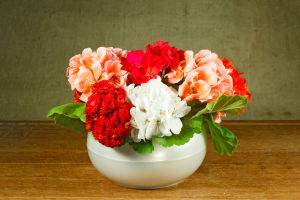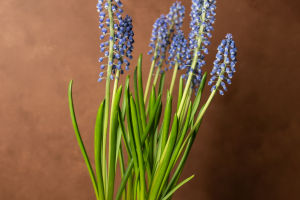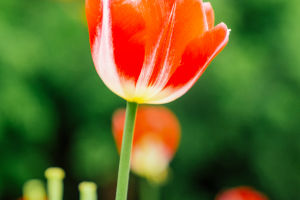Carnation, a perennial herbaceous plant, is a common name for various garden varieties of the Dianthus genus.
It grows to a height of 70-100 centimeters, with a semi-woody base. The entire plant is covered with a white powder, appearing gray-green.
The stem is stiff and brittle, with swollen nodes. The leaves are linear-lanceolate, entire-edged, thick in texture, with the upper half curving outward, opposite, and clasping the stem at the base. Flowers are usually solitary, arranged in umbel-like clusters.
The corolla is hemispherical, the calyx elongated and tubular, the bud acorn-shaped, the petals fan-shaped, with inner petals often wrinkled, and available colors include deep red, pink, goose yellow, white, deep red, as well as bicolored varieties like agate and edged varieties.
Carnations comprise many cultivars and hybrids, blooming almost continuously in greenhouses. The flowers are diverse in shape and color, typically fragrant, and have a long blooming period, making them ideal for bouquets and gardens. They are valued for their beauty, charm, lilac-like fragrance, and freshness.
Since 1907, pink carnations have been used as a symbol of Mother's Day, making them a common choice for honoring mothers.
The history of carnations can be traced back to ancient Greece and Rome, where they were used in art and decoration. Early carnations appeared mainly in pale pink and peach, but over the years, available colors have expanded to include red, yellow, white, purple, and even green. Despite centuries of change, the popularity of carnations has remained undiminished, demonstrating their enduring appeal.
Cultivation Methods for Carnations:
1. Soil Selection:
Soil is the medium in which plant roots grow. Creating a loose, well-aerated environment with adequate fertility and water retention is crucial for carnation cultivation. Carnations are herbaceous plants with fibrous roots that prefer to grow in loose, fertile, well-aerated soil or medium.
Sandy loam soil is preferred for planting carnations. Ideally, soil aeration should account for about 30% of the soil volume. Heavy and waterlogged soil hampers carnation growth and requires improvement to balance the solid, liquid, and gaseous phases.
2. Temperature Requirements:
Temperature plays a qualitative and quantitative role in the growth and development of carnations, affecting the growth rate, morphology, and size of flowers, leaves, and stems, as well as the yield and longevity of cut flowers.
Carnations are cool-loving plants, with the optimum growth temperature ranging from 19-21°C, and the diurnal temperature difference should be kept within 10°C.
Excessive daytime temperatures result in narrow leaves, small flowers, and poor branching, while excessively high nighttime temperatures lead to weak stems and small flowers despite good coloration. Growth slows down or becomes abnormal, or even stops when temperatures exceed 35°C in summer or drop below 9°C in winter.
3. Light Requirements:
Light is the energy source for plant growth, and carnations have one of plants' highest known light requirements. Apart from seedling or flowering stages, there is no need to worry about any harmful effects of strong light on carnations.
Carnations are also accumulative long-day plants, meaning longer exposure to light promotes flower bud differentiation, resulting in earlier flowering, improved flower uniformity, and higher cut flower yield. Supplemental lighting promotes internode elongation, suppresses lateral branch growth, and increases flower diameter and color brightness.
4. Watering Methods:
Carnations are shallow-rooted flowers, so the planting depth should not exceed 2 centimeters.
After planting, water thoroughly once, and subsequently, water when the soil is dry. Carnations are not tolerant of excessive moisture, so watering should be moderate to maintain soil moisture except during vigorous growth, flowering, and peak summer. Avoid excessively dry or wet soil during flowering.


